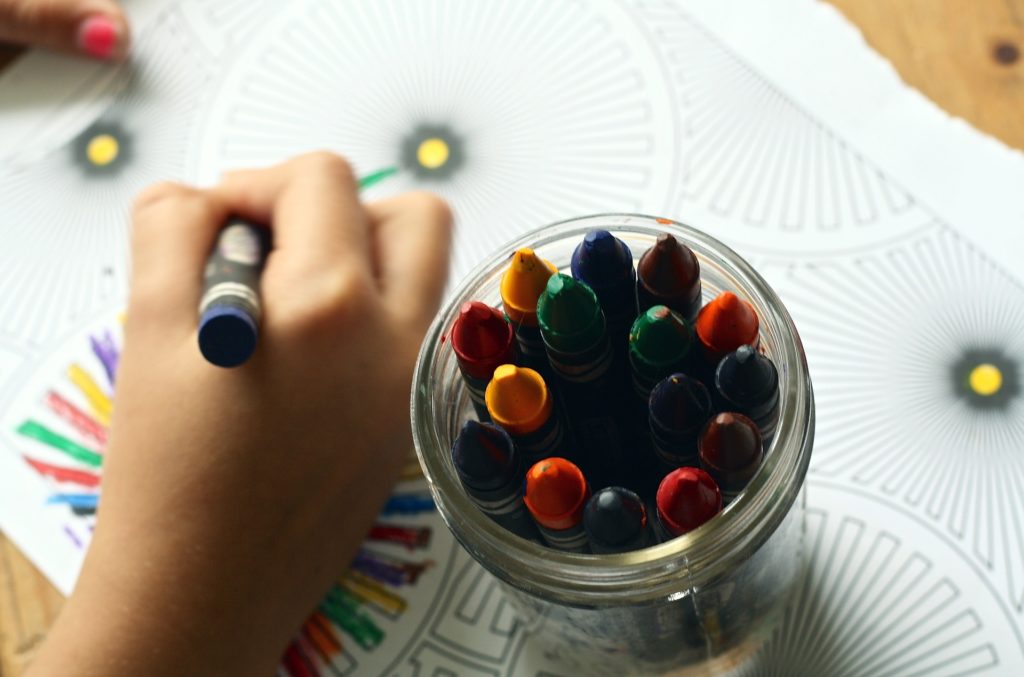I get asked this a lot – what to teach a preschooler or an early kindergartner, and is a curriculum essential?
The answer will vary based on your child. Every kid learns differently. Some need structure; others learn better in a casual learning environment. You can’t go wrong at this age, but if you are serious about building a structured learning plan, then there are many programs developed for the preschooler and up.
In my experience, it is never too early to introduce math, and we know that early literacy skills are key to successful reading. Language and Math need to be taught in a structured manner, and a good curriculum will save you a ton of time planning it out. But what should the homeschooler do to start this journey?
1. Building Routine
The first thing to do is create a habit of explicit learning with your child. It is harder for little ones to give you more than a few minutes of their time if it is not built into their routine. I know this from my experience homeschooling my middle child. He was a little over 3 when I started to include him in our homeschool.
Start with scheduling a time in the day when your kid will learn with you. It can be as little as 2-3 minutes. Then build up from there – move to 5 min then gradually get to the time you would like to spend with your child. The key is to make sure that they are giving you undivided attention. My goal was 30 min for my 3.5-year-old, and it eventually became an hour in the day in fragments. But we built up to it.
2. What to teach
Your child is learning no matter what they do – it could be from reading books, watching educational videos, or playing games. But there are things you can teach them without spending any money. These are so basic to our existence, and your kid will not know these unless explicitly taught. Here is my list of top 5 topics:
✔️Days of the Week
✔️Months of the year
✔️Seasons
✔️ Weather
✔️Cardinal Directions
Little kids have minds like sponges. Teaching them some of these facts will add to their knowledge base, increase their vocabulary, allow you to have unexpected conversations, introduce them to advanced literature, and in turn, assist your child in their language development. While these may not be on my top 5, you’ll be surprised at what your little ones will pick up and understand, so try these next.
✔️The names of the Planets
✔️Continents and Oceans.
Learning these topics can be done simply by watching fun and interactive songs, reading books, drawing pictures, etc. My two and four-year-old learned the months and days of the week from listening to ‘The Singing Walrus’ on YouTube. My 2.5-year-old knows what a tornado is from a poster in our homeschool room. We discuss the weather in the morning, and he gets to share what he thinks the weather is for the day.
3. Homeschool Curricula
I hear you when you say you are ready to do some serious learning. There are a lot of good curricula designed for preschoolers and up. Remember that every child at the age of 2 or 3 will learn at a different pace, so be aware of what your child can do, and don’t feel disappointed if the age three program you purchased does not fit your child.
I taught my kids numbers using a simple Montessori method of matching quantity to the number. It was only after this that I introduced a structured Math program. In our case, it was Singapore Math. It is an excellent curriculum, and we have been using it from Level PK (Pre-K) to Level 3 (3rd Grade).
It is also never too early to build literacy skills. It does not require learning the alphabet right away. Phonemic awareness is an early predictor of literacy skills, and it can be taught in a fun and simple way and only needs 5-10 minutes. We use a curriculum called Heggerty for this purpose. Their primary focus with their starter programs (early Pre-K) is phonological awareness.
WHAT I DO WITH MY PRESCHOOLERS.
I will not go into detail in this post but there is plenty of learning we do at home. I have a 3-year-old and a 4.5-year-old. At the time I am writing this post. They both play a lot in the day, but we also do structured learning. I will include a list of what I do for each of them below but make sure to head to my homeschool page to read about the various curricula we use.
3-year old Structured learning
Heggerty Early Pre-K – This curriculum focuses on developing Phonological and phonemic awareness. (10 min)
Memoria Press Pre-K Program – I don’t know how to explain this program. It is a little bit of everything. It is an excellent program for the mama who has no idea how to engage her toddler in learning. It has a little bit of everything. It is a Christian-based program and includes prayers, bible verses, but if you are looking for a secural program, you can still use it and skip over those portions. They give you prompts to discuss books, teach counting, introduce letters, do memory work, teach nursery rhymes, and so much more.
Singapore Math Pre-K – This is the math program we use. I have not yet fully started this with my youngest, but I did do this program with my middle child when he was 3.5 years old.
4.5 year old Structured learning
Heggerty Pre-K – This is the next level after the Early Pre-K program. It focuses on building Phonemic awareness and phonological awareness skills.
All About Reading – This is our Reading program and an excellent one. You can learn a little more from my Language Arts Page.
All About Spelling – The Reading program is focused on decoding while this program builds encoding skills. It is from the same company that creates All About Reading. Both Programs are Orton-Gillingham Based.
Evan-Moore Science & Geography – I add these for a little diversity in learning. At this age, I don’t believe it is necessary and that your child can learn science, history, geography, etc from books, watching videos, coloring, art, talking to them about it, etc. However, once you get to age 6, I do believe that these need to be taught more explicitly.
BREAKING THE MYTH
There are many opinions on whether to use structured learning programs with toddlers, given they are so young. In my personal experience and opinion, my kids have learned so many things in little time to their own benefit. The more your child learns, the more they know; the more they understand, the more meaningful experiences they have.
A structured learning program does not mean that your child is spending hours in the day learning. It is the quality of learning time that makes the difference. The intent of a structured program is to guide you as a home educator on what to teach, when, and how. Introducing letter sounds or teaching your toddler to count or recognize baby animal names are good things to teach. Your child will never have wasted a moment of their childhood having learned those things so young.
Conclusion
There is a world of homeschool curricula out there but for now, know this — you can introduce curricula learning with your preschooler or keep it simple. if you want to engage your child in some form of education- the key is to have a routine, make time for quality learning, and work at your child’s pace.



